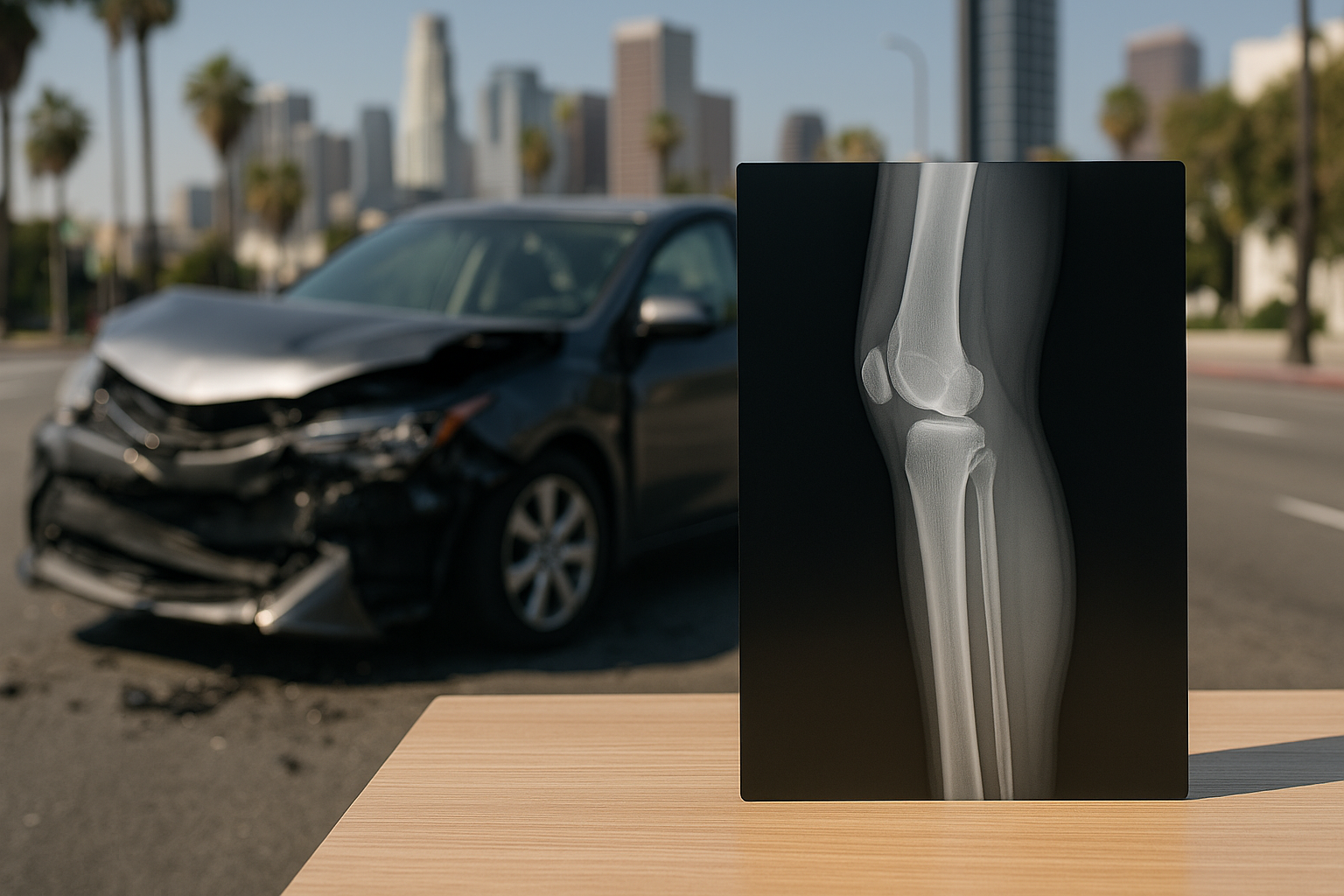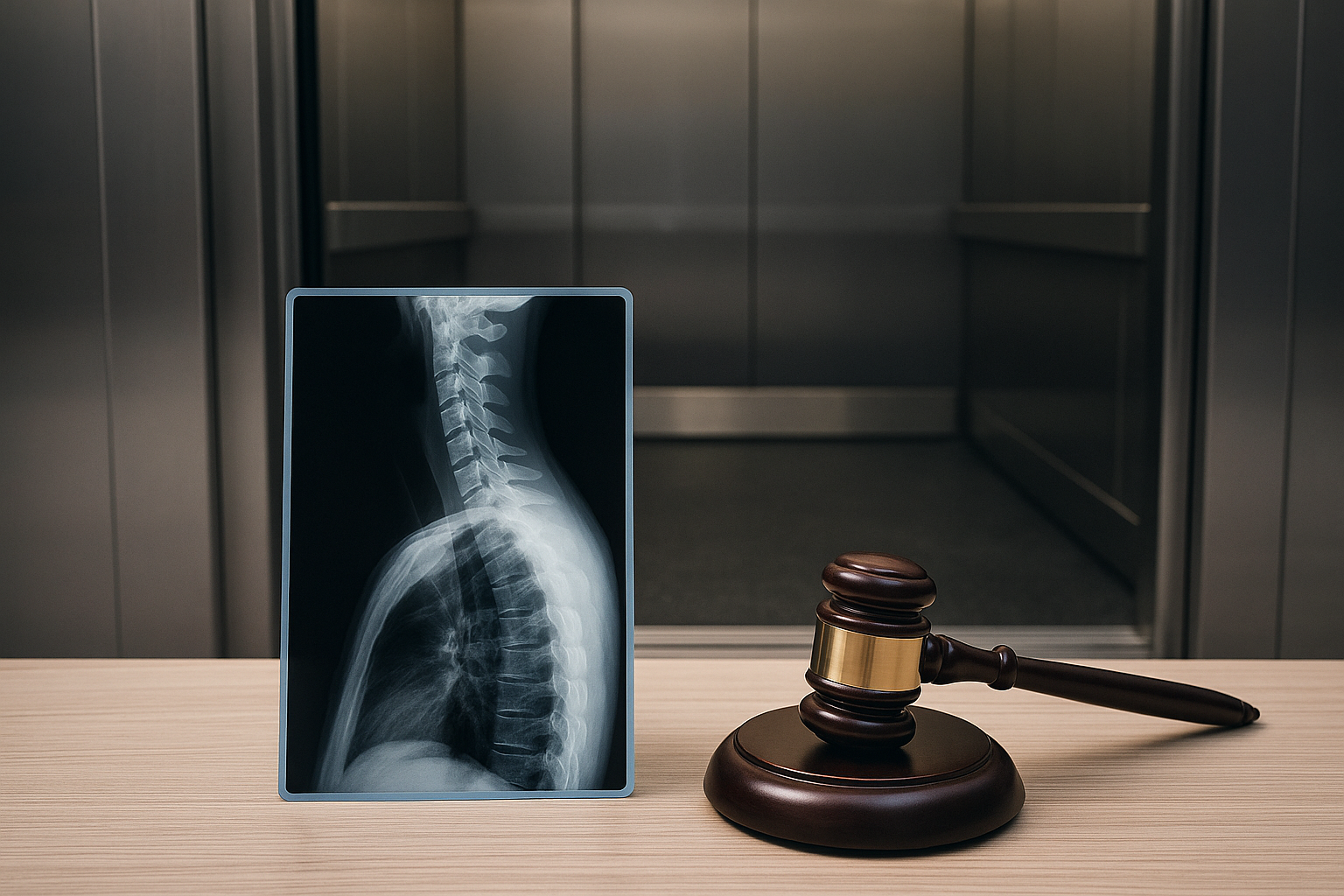Leg injuries are among the most common outcomes of traffic collisions in Southern California, especially when passengers are inside ride share vehicles like Uber or Lyft. This guide explains what victims need to know about Leg Injuries in Los Angeles Ride Share Vehicle Accidents and how turning a claim into recovery can restore both financial and personal stability.
Why are leg injuries common in Los Angeles ride share crashes?
Passengers often sit with limited leg space, making the lower body vulnerable during impact. Knees and shins usually hit the front seat, console, or door when a collision occurs. Even a low speed crash can twist or pin the legs, leading to painful soft tissue injuries.
Head on or T bone collisions frequently result in broken bones, tendon damage, or deep bruising. The crowded Los Angeles roadways and unpredictable driving behavior often increase the risk of traumatic leg harm in ride share vehicles.
Most common types of leg injuries in ride share accidents
Leg injuries can vary widely depending on the direction and severity of the crash. Common trauma includes:
- Fractured femur, tibia, or fibula bones
- Torn ligaments, including ACL and MCL
- Deep bruising or muscle strain
- Knee dislocations or patellar damage
- Cuts, lacerations, or crushing injuries
- Nerve compression or chronic pain conditions
These injuries may seem minor at first but can progress without proper diagnosis and treatment.
What symptoms suggest a serious leg injury?
Victims should pay close attention to:
- Intense pain when standing or walking
- Swelling or visible deformity in the knee or leg
- Limited range of motion or muscle weakness
- Numbness or tingling sensations
- Inability to bear weight on the injured leg
Noticing symptoms early can prevent long term disability.
Who is liable for ride share related leg injuries in Los Angeles?
Determining responsibility is often complex. Liability may fall on:
- The ride share driver
- Another negligent driver
- The ride share company under specific insurance rules
California law uses negligence principles. If a driver acted carelessly or broke traffic rules, their insurance may have to pay for your medical bills and other losses.
How does ride share insurance work after a crash?
Insurance coverage varies depending on the stage of the ride:
| Ride share trip stage | Insurance coverage | Primary payer |
|---|---|---|
| Driver is logged into the app but has not accepted a ride request | Limited liability coverage may apply | Ride share company coverage is secondary to driver’s personal insurance |
| Driver is en route to pick up a passenger or a passenger is already in the vehicle | Up to $1 million liability coverage, plus uninsured or underinsured motorist coverage | Ride share company’s commercial insurance |
| Driver is completely offline and not using the app | Personal auto insurance only | Driver’s private insurer |
Knowing the status of the ride helps determine where to file a claim and what compensation is possible.
What to do after a ride share accident if you hurt your leg
Taking appropriate steps protects both health and the claim process. Here is a guide:
- Get medical attention immediately: Even if pain or swelling seems minor, leg injuries often worsen over time. Early medical evaluation creates documentation that is crucial for your claim.
- Report the crash through the ride share app: Submitting a report ensures the incident is recorded and alerts the company’s insurance team that you were injured during the trip.
- Document the scene and your injuries: Take photos of vehicle damage, road conditions, and visible bruising or swelling. These details can protect you against disputes later.
- Collect witness and driver information: Names, phone numbers, license plates, and license details help confirm what happened and who was involved.
- Request a police report: An official report strengthens your claim by verifying fault, crash details, and the timeline of events.
- Speak to an attorney before insurers: Insurance adjusters often try to reduce payouts. A lawyer communicates on your behalf, helping you avoid statements that could harm your claim.
What compensation can victims recover for leg injuries?
Compensation depends on the severity of the injury and its impact on life. Possible recovery includes:
- Emergency care and hospital bills
- Future medical treatment, surgeries, or rehab
- Lost wages or reduced ability to work
- Pain, emotional trauma, and lifestyle limitations
- Mobility aids, physical therapy, and home modifications
Serious fractures or ligament tears may lead to long recovery periods, so future costs should always be included.
Why are leg injuries especially costly for victims?
Walking, standing, and mobility are essential to daily life. A damaged leg can disrupt employment, independence, and mental well being. Many victims struggle with transportation needs and require long term therapy.
A fair claim should reflect both short term expenses and long term challenges. Insurance companies often try to minimize payouts, so victims benefit from legal support.
How to prove a leg injury claim in Los Angeles
Strong evidence builds stronger compensation. Lawyers often gather:
- Medical imaging scans such as X rays or MRIs
- Doctor’s statements about long term limitations
- Accident reconstruction details
- Ride share platform records showing trip status
- Expert testimony on chronic disability or loss of earnings
When insurers see well organized documentation, they are more likely to settle fairly.
How long do I have to file a California injury claim?
The California statute of limitations gives many victims two years from the date of the crash to file a claim. Waiting too long makes it harder to obtain evidence and risks losing legal rights.
It is best to contact a personal injury attorney early so they can start protecting your claim immediately.
Learn More: What Is the Statute of Limitations in California for Injury Cases?
What challenges do victims face during the claims process?
Ride share insurance companies often try to argue:
- The passenger’s leg injury was pre existing
- The pain level does not require future treatment
- The accident was low impact and therefore minor
- The driver of the ride share vehicle is not responsible
A lawyer focuses on countering tactics that delay or reduce settlement offers.
A confident step forward: Rebuilding after a ride share leg injury
Leg injuries from Los Angeles ride share accidents cause more than physical harm. They disrupt routines, financial security, and independence. Understanding your legal rights helps protect the future while you work to recover mobility.
Knapp Moss fights for passengers injured due to negligence. Our personal injury team handles complex ride share claims and stands up to powerful insurance companies so you receive the compensation you deserve.
Call today for a free consultation.
Frequently Asked Questions
Every case varies depending on medical treatment and insurer cooperation. Serious fractures or surgeries usually extend the timeline to ensure full recovery costs are included.
Yes, delayed symptoms are common after accidents. Medical documentation showing your condition soon after the crash can still support your case.
Not always. Liability may involve multiple drivers or insurers, depending on who caused the accident and the trip stage at the time of the collision.
Most personal injury firms work on a contingency basis. This means you do not pay unless your lawyer wins compensation for you.
Ride share companies may provide higher coverage when the driver is in service. A lawyer will determine which policies apply.




